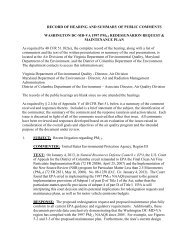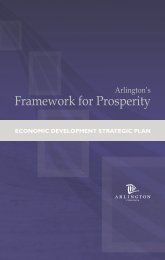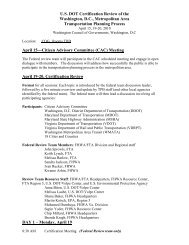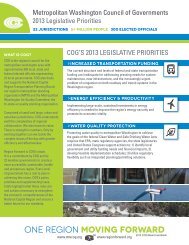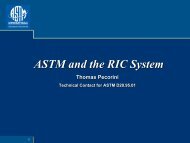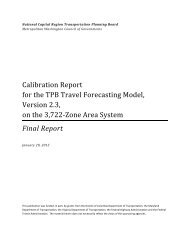PTI Local Government Energy Assurance Guidelines - Metropolitan ...
PTI Local Government Energy Assurance Guidelines - Metropolitan ...
PTI Local Government Energy Assurance Guidelines - Metropolitan ...
Create successful ePaper yourself
Turn your PDF publications into a flip-book with our unique Google optimized e-Paper software.
Key Questions<br />
…in Identifying <strong>Local</strong> <strong>Energy</strong> Infrastructure/<strong>Energy</strong> Usage Characteristics<br />
1. What role has energy price volatility played in the local government’s past?<br />
2. What happens when local suppliers cannot meet the jurisdiction’s energy needs?<br />
3. Why is it necessary to continue to pay attention to energy markets after a contract is in place<br />
with a supplier?<br />
4. How long do the existing energy supply contracts run?<br />
5. How long should new energy supply contracts run?<br />
6. Who regulates the local government energy prices/rates, and how does this process work?<br />
7. Is the State or local energy supply market being restructured currently, and if so, how does this<br />
affect future supply options?<br />
8. What are the local energy consumption (use) patterns?<br />
9. What times of day are local energy prices the highest?<br />
10. Has the jurisdiction completed a recent energy audit of government facilities and equipment,<br />
and if so, where are the results and recommendations?<br />
3.7 Step Six: Know the Primary Contacts and Related Partners<br />
Responding effectively and efficiently to an energy emergency once it begins involves knowing which private and<br />
public sector experts to contact as soon as possible. Developing and keeping an up-to-date list of primary contacts<br />
can be an important part of a local EAP. This list of primary contacts can include critical service providers, local<br />
government decision-makers, and State, Federal, and regional government authorities and energy suppliers. It can<br />
also be useful to include on the list leadership from other local and regional government councils that depend on the<br />
same energy supplies and infrastructure. These are the people who can be reached during an emergency to provide<br />
current information on the jurisdiction’s energy resources and infrastructure.<br />
The list of contacts should include 24-hour phone numbers and backup phone numbers for all key personnel. It can<br />
also include titles, responsibilities during an energy emergency, past energy emergency experience, email addresses,<br />
physical addresses, and designated alternates if primary contacts cannot be reached. The list should be provided<br />
electronically and as hard copy to everyone who will be charged with implementing EAP elements in response to an<br />
energy disruption.<br />
Many energy shortages and potential emergencies can be resolved via direct communication with key industry and/<br />
or public sector decision-makers. Most shortages and supply disruptions are addressed without the declaration of an<br />
emergency. It is important to know which entities and individuals are responsible for managing specific tasks related<br />
to an energy emergency. This reduces unnecessary redundancy and the potential spread of misinformation while<br />
responding to the emergency.<br />
<strong>Local</strong> <strong>Government</strong> <strong>Energy</strong> <strong>Assurance</strong> <strong>Guidelines</strong> – Version 2.0 | 51



